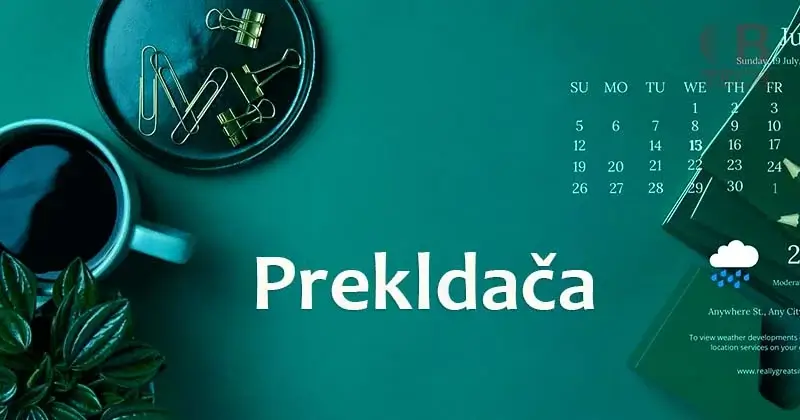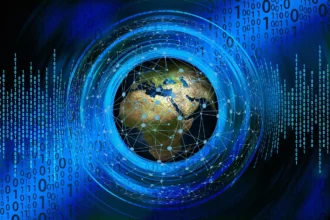Introduction to prekldača
In our interconnected world, language should never be a barrier. Enter the prekldača—a bridge that connects cultures, ideas, and people from every corner of the globe. Whether you’re navigating a foreign market or exchanging friendly emails with someone across continents, prekldača play a pivotal role in ensuring clear communication. But this isn’t just about swapping words; it’s about transforming meanings and emotions into something universally understood. As technology evolves at lightning speed, so does the art of translation. Let’s dive into how these language experts are harnessing new tools to make their work more efficient and impactful than ever before!
The evolution of translation technology
Translation technology has come a long way since its inception. Early attempts relied heavily on human effort, with scribes painstakingly translating texts by hand.
The first machine translation systems emerged in the 1950s, but their accuracy was limited. These systems struggled to grasp nuances and cultural context. However, they laid the groundwork for future advancements.
With the rise of artificial intelligence and deep learning in recent years, prekldača have witnessed a significant transformation. Algorithms can now analyze vast amounts of data, improving both speed and precision.
Today’s tools incorporate real-time translation features that enable seamless communication across languages. Mobile apps allow users to translate text instantly with just a few taps.
As technology continues to advance, so too does our ability to connect globally without language barriers. The landscape of translation is evolving rapidly, shaping how we interact and understand one another in an interconnected world.
How prekldača are using technology to improve their work
Modern prekldača are increasingly leveraging technology to enhance their efficiency and accuracy. Tools like Computer-Assisted Translation (CAT) software allow them to maintain consistency across large projects. These platforms enable prekldača to create glossaries and translation memories, making it easier to reuse previously translated segments.
Machine translation has also become a valuable resource. While human oversight remains crucial, AI-driven tools can provide quick drafts that save time during the initial phase of translation. This allows professional prekldača to focus on refining language nuances rather than starting from scratch.
Collaboration is another area where technology shines. Cloud-based platforms facilitate real-time communication among teams scattered around the globe. prekldača can share insights instantly, ensuring everyone is aligned with project goals and deadlines.
Additionally, mobile apps have made it possible for prekldača to work on-the-go, increasing flexibility without compromising quality or productivity.
Advantages and disadvantages of using translation tools
Translation tools offer a multitude of advantages. Speed is one of the most significant benefits. These tools can translate large volumes of text in just moments, which can save time for businesses and individuals alike.
Consistency is another major plus. Automated systems often maintain uniformity in terminology throughout documents, ensuring that specific phrases are translated identically every time.
However, there are downsides too. Translation tools sometimes struggle with context, leading to inaccuracies or awkward phrasing that a human prekldača would avoid.
Cultural nuances may be overlooked as well. A word-for-word translation might miss the subtleties that give depth to communication between cultures.
Reliance on technology could diminish language skills over time. Users might become dependent on these tools and less proficient in their language abilities as a result.
The impact of translation on global communication and business
Translation plays a pivotal role in bridging cultural and linguistic divides. It enables businesses to connect with diverse audiences across the globe.
Imagine a marketing campaign tailored for different regions. Effective translation ensures that messages resonate culturally, not just linguistically. This fosters trust and enhances brand loyalty.
In international business dealings, accurate translations of contracts and documents are critical. Misinterpretations can lead to costly errors or disputes. Thus, precision is paramount.
Moreover, technology amplifies these efforts. Machine translation tools facilitate quick communication between teams worldwide, speeding up decision-making processes.
The demand for multilingual support continues to rise as markets globalize further. Companies without effective translation strategies risk losing out on potential growth opportunities.
As we navigate an increasingly interconnected world, the importance of skilled prekldača cannot be overstated. They serve not only as language converters but also as cultural mediators essential for successful global ventures.
Future possibilities for translation technology
As we look ahead, the future of translation technology is brimming with potential. Advancements in artificial intelligence are set to revolutionize how prekldača work. With more sophisticated algorithms, machines will understand context and nuance better than ever before.
Real-time translation tools could soon become commonplace. Imagine having seamless conversations across languages without missing a beat. This technology may bridge gaps that have long existed in global communication.
Moreover, augmented reality could play a role as well. Visual translations overlaid on physical environments might enhance user experiences during travel or business meetings.
Collaboration between human prekldača and AI will likely grow stronger too. The synergy can lead to higher accuracy while allowing professionals to focus on creative aspects of their work.
With continuous innovation, the landscape of translation promises exciting developments that can reshape our interactions on a global scale.
Conclusion: Embracing the power of translation in a rapidly changing world
Translation is more than just converting words from one language to another. It’s about bridging cultures and fostering understanding in an increasingly interconnected world.
As technology advances, the role of a prekldača evolves. They harness cutting-edge tools to enhance their craft, making communication seamless across borders.
The ability to convey ideas accurately can open doors for businesses and individuals alike. This fosters collaboration and innovation on a global scale.
Embracing translation means valuing diverse perspectives and enabling meaningful interactions. The barriers once posed by language are steadily diminishing.
With each new development in translation technology, we move closer to a world where everyone has a voice that can be understood everywhere.
FAQs
Q: What is a prekldača?
A: A prekldača is a professional who converts written text from one language to another. They play a crucial role in facilitating communication between speakers of different languages, ensuring that nuances and meanings are preserved.
Q: How has translation technology evolved?
A: Translation technology has come a long way. From early dictionaries and phrasebooks to sophisticated software like machine learning algorithms, tools have advanced significantly. Today’s prekldača can utilize tools that enhance speed and accuracy.
Q: What technologies do prekldača use today?
A: Modern prekldača leverage various technologies, including computer-assisted translation (CAT) tools, neural machine translation (NMT), and glossaries tailored to specific industries. These innovations help streamline the process while maintaining quality.
Q: What are the advantages of using translation tools?
A: The benefits include increased efficiency, consistency across documents, access to vast databases of terminology, and improved collaboration among teams spread across different locations.
Q: Are there any disadvantages to relying on translation technology?
A: While helpful, reliance on technology can lead to errors if not monitored carefully. Additionally, machines may miss cultural context or emotional nuance inherent in human communication.
Q: How does translation impact global business?
A: Effective translation enables companies to reach wider audiences by breaking down language barriers. It fosters better customer relationships and opens doors for international partnerships.
Q: What future advancements can we expect in translation technology?
A: The future holds exciting possibilities such as AI-driven translations becoming even more accurate through continuous learning. Enhanced real-time interpretation could revolutionize how we engage globally.
Feel free to ask more questions about this evolving field! Whether you’re interested in becoming a prekldača or simply want insights into current trends, there’s always something new on the horizon.

















